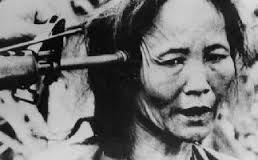16 March 1968. Viet Nam. The Charlie Company, of the 1 battalion, 11in Brigade, 23in Light Infantry Division, known as the Americal Division under the command of Lieutenant William Calley entered into one of four villages in the Vietnamese village of Son My. That mission was named Search and Destroy, Search and destroy. The village that was the scene of this story was My Lai located 840 km north of Saigon. The main reason why Lieutenant Calley and his men entered the village of My Lai was to avenge an attack the previous VC, retaliation. That morning, though, at My Lai there was no VC, just old, women and children. American soldiers massacred anyone they filled up the front, animals including. They raped women and killed, even those pregnant. The few survivors reported that a pregnant woman's belly was opened, ripped the fetus and launched into a brush. They shot the children to mothers and their grandparents. They threw hand grenades in the huts, they gave fire to the houses and killed livestock around them. A pitiless fury only stop by’ arrival of a helicopter of’ u.s. military reconnaissance, which landed and interposed between the u.s. military and the last survivors of the Vietnamese village. The pilot warrant officer Hugh Thompson, Jr., He faced the heads of American troops and threatened that it would open fire on them unless they stopped. The other two crew members of the helicopter – Lawrence Colburn and Glenn Andreotta – they put their heavy weapons against fellow soldiers who were authors of the massacre. The official report referred to 90 VC killed and zero civilians. But the truth was laboriously afloat: the victims were approximately 347 civilians. The reporter Seymour Hersh brought the massacre to the knowledge of the general public in 1969. Some Colin Powell, then young greater, was commissioned to shed light on the affair, but from his job came up a candeggiatura of news and a minimization of the facts. He was just making up a process in which only the Lieutenant William Calley was convicted. His commanding officer Ernest Medina from which Calley said he had taken orders he was acquitted. Calley was the only convicted, and for him there was worth of’ life in prison through hard labor. A few days after President Nixon, with "infinite mercy”, He ordered his release from prison. Calley served just 3 and a half years of house arrest. Was so closed officially a shameful story of war, that still makes us feel so much layered stinks.
Hector Parker
